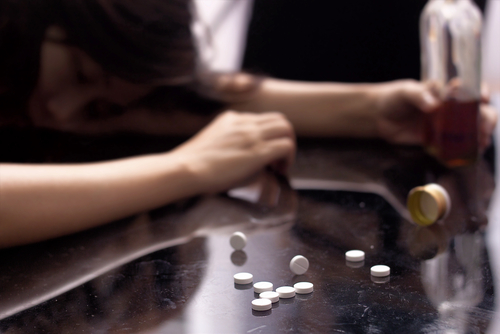It’s easy to become overwhelmed by the many therapy types offered by recovery facilities like Pathways Recovery Center. Fortunately, there is a way to simplify the process of learning about these therapies. While holistic therapies are many and varied, traditional psychotherapy generally comes in two popular forms: CBT and DBT.
Cognitive-behavioral therapy (CBT) and dialectical behavior therapy (DBT) are two common psychotherapy treatments. Both treat a variety of mental health disorders including substance use (SUD) and depressive, anxiety, and personality disorders. Understanding CBT and DBT can make it easier to decide which to incorporate into your individualized treatment plan.
Histories of CBT and DBT
Knowing the history of CBT and DBT can help you understand how they came to be used in recovery treatment. While CBT has been around for longer than DBT, both therapy methods are evidence-based practices. CBT and DBT have been studied extensively, and more research is done every day.
The History of CBT
Originally called cognitive therapy, CBT was developed in 1960 by psychiatrist Aaron Beck. When treating patients for depression, Beck noted that many of his patients expressed cognitive distortions.
He wondered if it made more sense to treat depression as a cognitive disorder instead of a mood disorder. In 1979, he published an outline of his theory for what eventually become known as CBT.
The implementation of CBT has evolved since 1979 as more and more clinical psychologists studied it and incorporated behavioral strategies. Research has found CBT effective in treating the following conditions:
- Depressive disorders
- Anxiety disorders
- Eating disorders
- Personality disorders
- SUD
The History of DBT
In the 1970s, psychologist Marsha Linehan developed DBT as a treatment for “multiproblematic” suicidal women. Linehan studied CBT and its effects on various disorders. However, she was looking to create a treatment strategy that directly targeted suicidal behavior.
She noted that CBT interventions were sometimes too focused on behavioral change. This caused many patients to feel criticized and misunderstood. In some cases, this resulted in them dropping treatment altogether.
Linehan wanted to create a therapy technique that encouraged acceptance of the self in addition to behavioral changes. Thus, DBT was born. Linehan research proved the effectiveness of DBT for borderline personality disorder (BPD). Later researchers have found DBT effective in helping people with a variety of mental health disorders.
Similarities Between CBT and DBT
DBT and CBT have many similarities. After all, DBT was based on the practice of CBT!
They both share the goal of changing patients’ unwanted behaviors and thought patterns. These treatments are based on the understanding that cognitions, emotions, and behavior are intertwined. If a person succeeds in changing one of these categories, the others are sure to follow.
CBT and DBT both focus on the following aspects of cognitive health:
- Automatic thoughts: The immediate interpretation of events that shape a person’s emotions, actions, and response to an event.
- Cognitive distortions: Logical errors in thought patterns that lead to incorrect conclusions not based on reality. (i.e., overgeneralization, mindreading, minimization, or emotional reasoning).
- Underlying beliefs: Beliefs that shape a person’s perception and interpretation of an event. These beliefs are formed through a person’s life experiences.
Differences Between CBT and DBT
The main difference between CBT and DBT is DBT’s focus on self-acceptance.
This may be especially helpful for people with BPD. After all, it was Linehan’s desire to create a more effective treatment for people with BPD that led to the development of BPD. People with BPD tend to be insecure about their sense of self and are, therefore, more likely to feel attacked by some of the CBT techniques.
DBT tries to avoid this. Specifically, DBT focuses on validating clients’ emotions and making them feel accepted. Research has shown that DBT is especially effective in treating patients with parasuicidal BPD, eating disorders, and women with SUD. DBT has been successful in:
- Reducing hospitalizations
- Increasing social functioning
- Reducing disordered eating
- Mitigating anger characteristics
Unlike CBT, DBT focuses on treating five key functions:
- Building a skillset to enhance a patient’s capabilities such as emotional regulation, mindfulness skills, interpersonal effectiveness, and distress tolerance skills.
- Generalizing these skills to be applicable to the client’s everyday life in their natural environment.
- Improving motivation to change and reducing dysfunctional, destructive behaviors.
- Providing therapist consultation team meetings to reduce therapist burnout by providing support and encouragement for one another.
- Structuring the environment so that all of the client’s treatments are on the same page and helping clients stay away from environments that could hurt their mental health.
What Type of Therapy Is Right for You?
Finding the right treatment will take trial and error. However, certain diagnoses tend to have a higher success rate with DBT treatment as opposed to CBT. If you experience parasuicidal thoughts, binge eating, or have been diagnosed with BPD, then DBT may be the right treatment option for you.
However, more often than not, the best treatment plans involve a variety of treatment methods. No two people will respond the same to any treatment method. This is why the mental health professionals at Pathways Recovery Center will work with you to form a strong therapeutic alliance. They will create a treatment plan for you that is specific to your recovery needs.
Understanding the different types of therapy treatments available for SUD can help you create a treatment plan that is specific to your needs. Both CBT and DBT are evidence-based treatments that could help you manage your substance use and mental health symptoms. Pathways Recovery Center offers both CBT and DBT along with other types of therapies. Our mental health professionals are dedicated to working with you to create a treatment plan that will meet your recovery needs. We are here to guide you through your recovery one step, one day at a time. If you or someone you know is struggling with substance use, call (888) 771-0966 to learn how we can meet you where you are in recovery.




